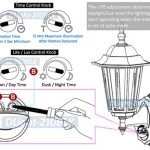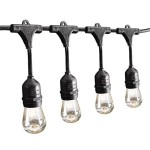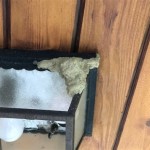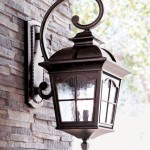Understanding Waterproof Outdoor Sofas: Materials, Construction & Maintenance
The allure of outdoor living has led to an increased demand for comfortable and stylish furniture that can withstand the elements. Among these, outdoor sofas stand out as a central piece for creating inviting and relaxing spaces on patios, decks, and gardens. However, the term "waterproof" in relation to outdoor furniture, especially sofas, requires careful consideration. While a completely impermeable sofa is practically non-existent due to comfort and breathability requirements, the industry offers various degrees of water resistance that effectively protect against rain, spills, and humidity. This article delves into the factors that determine the water resistance of outdoor sofas, explores the materials used in their construction, and provides guidance on maintenance practices to ensure longevity.
Key Point 1: Decoding "Waterproof" in the Context of Outdoor Sofas
The term "waterproof" when applied to outdoor sofas is often a misnomer. It's more accurate to describe them as water-resistant or weather-resistant. True waterproofing, in the sense of complete impermeability, would typically involve materials that lack breathability, making them uncomfortable for prolonged sitting. A truly waterproof sofa would essentially be sealed, preventing airflow and leading to condensation buildup inside, which, ironically, could damage the internal structure over time. Instead, manufacturers focus on creating sofas that repel water and dry quickly, minimizing the risk of water damage and mold growth.
Water resistance is achieved through a combination of factors, including the materials used for the frame, cushions, and upholstery, as well as the construction techniques employed. The goal is to prevent water from penetrating the sofa's core while allowing moisture vapor to escape, maintaining comfort and preventing the accumulation of mold and mildew. The level of water resistance can vary significantly between different models and brands, making it essential to understand the specifications and features of a particular sofa before making a purchase.
Understanding the difference between waterproof and water-resistant is crucial. Waterproof materials create a barrier that completely blocks water, while water-resistant materials repel water to a certain extent. The degree of water resistance is often indicated by a hydrostatic head rating, which measures the amount of water pressure a fabric can withstand before water penetrates it. Higher hydrostatic head ratings indicate greater water resistance. However, this rating is primarily used for fabrics and not typically applied to the sofa as a whole.
Key Point 2: Materials and Construction Techniques for Water Resistance
The selection of materials is paramount in determining the water resistance of an outdoor sofa. Each component, from the frame to the upholstery, plays a critical role in its ability to withstand exposure to the elements.
Frames:
The frame provides the structural support for the sofa. Commonly used materials include aluminum, teak, and treated wood. Aluminum is a popular choice due to its rust-resistant properties and lightweight nature. Teak, a hardwood, is naturally resistant to moisture, decay, and insects, making it an excellent option for outdoor furniture. However, teak requires regular maintenance, such as oiling, to preserve its natural oils and prevent it from drying out and cracking. Treated wood, such as pressure-treated lumber, can also be used, but it's essential to ensure that the treatment is suitable for outdoor use and that the wood is properly sealed to prevent water damage.Cushion Filling:
The filling material used in the cushions significantly impacts water resistance and comfort. Options include polyurethane foam, polyester fiberfill, and quick-drying foam specifically designed for outdoor use. Polyurethane foam is relatively inexpensive but can absorb water if not properly protected. Polyester fiberfill is more resistant to water absorption and dries more quickly than polyurethane foam. Quick-drying foam, often referred to as open-cell foam, is engineered with larger pores that allow water to drain rapidly and air to circulate freely, preventing mold and mildew growth. This is often the most expensive, but most durable option.Upholstery Fabrics:
The upholstery fabric is the first line of defense against water and other elements. Popular choices include acrylic fabrics like Sunbrella, polyester fabrics, and olefin fabrics. Acrylic fabrics are known for their excellent resistance to fading, staining, and water. They are also highly durable and easy to clean. Polyester fabrics are a more economical option that still offers good water resistance and durability. Olefin fabrics are lightweight, stain-resistant, and quick-drying, making them suitable for outdoor use. Regardless of the fabric type, it's crucial to ensure that it is treated with a water-repellent finish to enhance its water resistance.Construction Techniques:
In addition to material selection, construction techniques play a crucial role in water resistance. Seams are potential points of water entry, so manufacturers often use techniques such as taped seams or inverted seams to minimize water penetration. Taped seams involve applying a waterproof tape to the inside of the seam to seal it, while inverted seams hide the raw edges of the fabric, reducing the risk of water wicking through the seam. Furthermore, using rust-resistant hardware, such as stainless steel screws and bolts, is essential to prevent corrosion and maintain the sofa's structural integrity.Key Point 3: Maintenance and Care for Prolonging Water Resistance
Even with the most water-resistant materials and construction, proper maintenance and care are essential for prolonging the life and performance of an outdoor sofa. Regular cleaning, proper storage, and timely repairs can significantly extend its lifespan and prevent water damage.
Regular Cleaning:
Routine cleaning helps remove dirt, debris, and spills that can compromise the water resistance of the upholstery fabric. Depending on the fabric type, cleaning methods may vary. Generally, a mild soap solution and a soft brush or sponge can be used to clean the fabric. It's essential to rinse the fabric thoroughly with clean water to remove any soap residue. For more stubborn stains, specialized fabric cleaners designed for outdoor furniture may be necessary. Consulting the manufacturer's instructions for specific cleaning recommendations is always advisable.Protective Covers:
Using protective covers when the sofa is not in use is an effective way to shield it from rain, sun, and other elements. Covers should be made from breathable materials to prevent moisture buildup underneath. It's also important to ensure that the cover fits snugly and is securely fastened to prevent it from being blown away by wind. Regular inspection of the cover for tears or damage is essential to maintain its effectiveness.Storage:
During periods of prolonged inclement weather or when the sofa is not in use for an extended period, storing it in a dry, sheltered location is highly recommended. This could be a garage, shed, or covered patio. If storage space is limited, consider investing in waterproof storage bags or containers to protect the sofa from moisture and pests. Before storing the sofa, ensure that it is thoroughly cleaned and completely dry to prevent mold and mildew growth.Water Repellent Treatments:
Over time, the water-repellent finish on the upholstery fabric may degrade due to exposure to the elements and regular cleaning. Reapplying a water-repellent treatment can help restore the fabric's water resistance. There are numerous water-repellent sprays available that are specifically designed for outdoor fabrics. Before applying the treatment, ensure that the fabric is clean and dry. Follow the manufacturer's instructions carefully, and test the treatment on an inconspicuous area of the fabric first to ensure that it does not cause any discoloration or damage.Addressing Minor Damage:
Regularly inspect the sofa for any signs of damage, such as tears in the fabric, loose seams, or damaged hardware. Addressing these issues promptly can prevent them from escalating and compromising the sofa's water resistance. Minor tears in the fabric can often be repaired with a patch or by sewing. Loose seams should be re-stitched. Damaged hardware should be replaced with rust-resistant alternatives. Delaying repairs can allow water to penetrate the sofa's core, leading to more extensive damage and potentially shortening its lifespan.In conclusion, selecting and maintaining a water-resistant outdoor sofa involves considering various factors, from material choices to construction techniques and ongoing care. Understanding these elements empowers consumers to make informed decisions and ensure their outdoor furniture provides years of enjoyment, despite exposure to the elements.

Waterproof Outdoor Furniture With Modern And Sophisticated Designs

Luxury Outdoor Sofas All Year Round Inspirations Whole Blog

Waterproof Outdoor Couches The Home Depot

Waterproof Outdoor Furniture With Modern And Sophisticated Designs

Outdoor Waterproof Fabric The Best For Furniture Living Spaces

Rattan Outdoor Sofa Set Nordic Design Waterproof Sunscreen For Patio Garden Homestay

Outdoor Waterproof Fabric The Best For Furniture Living Spaces

Aoxun Rattan Patio Furniture Set 6 Piece Sectional Sofa With Coffee Table And Waterproof Cover Red

Waterproof Outdoor Couches The Home Depot

Waterproof Outdoor Furniture With Modern And Sophisticated Designs
Related Posts







